
Yoga offers a wide variety of stretching routines that improve flexibility, increase strength, and support mental clarity. One of the most visually impressive—and physically challenging—poses in yoga is the middle split, also known as straddle split or center split. Often seen as a benchmark of flexibility, the middle split is not just about showing off flexibility—it’s a posture that demands balance, patience, and body awareness. In this article, we’ll explore the benefits, preparation, techniques, and safety tips for working toward your middle splits in yoga.
What Is the Middle Split?
The middle split, or Samakonasana in Sanskrit, involves spreading the legs to the side until they form a straight line across the floor. The hips stay square, and the torso remains upright, often supported by the hands or even lying forward in more advanced versions. This stretch primarily targets the inner thighs (adductors), hamstrings, and hip flexors.
Unlike front splits (where one leg is forward and the other is back), the middle split requires bilateral flexibility and hip opening. It’s more intense for many people because it involves muscles that aren’t often stretched in everyday activities.
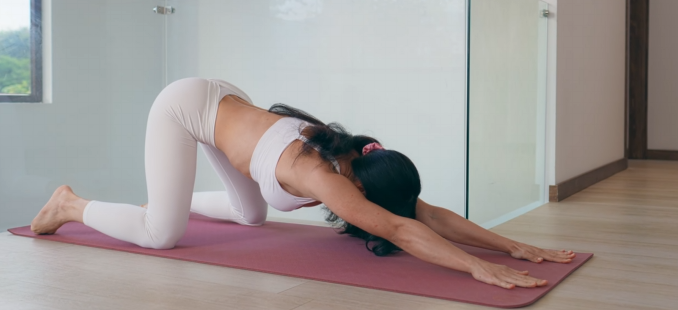
Benefits of the Middle Split in Yoga
While it may seem like an advanced pose, working toward the middle split can offer many physical and mental benefits—even if you don’t reach a full 180-degree split:
1. Improves Hip Flexibility
The middle split deeply stretches the inner thigh muscles and opens the hips. Improved hip mobility helps with daily movements, reduces stiffness, and may prevent injuries.
2. Enhances Posture and Balance
Proper technique in the middle split requires strong core engagement and postural alignment. Practicing it helps strengthen the spine, abdominals, and stabilizing muscles around the pelvis.
3. Increases Body Awareness
The slow, progressive nature of split training requires you to listen to your body and respect its limits. This awareness is central to yogic principles and can translate to better alignment in other poses.
4. Reduces Risk of Injury in Sports
Athletes, especially dancers, martial artists, and gymnasts, use split training to increase range of motion and prevent muscle strains.
5. Develops Patience and Discipline
Working on middle splits isn’t an overnight achievement. It takes consistent effort, making it a great exercise in patience, discipline, and mental resilience.
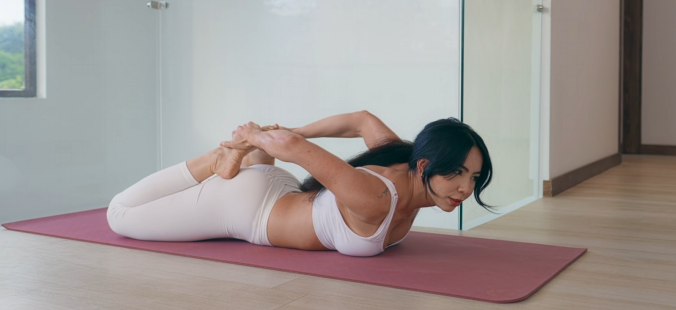
Preparing for the Middle Split
Before jumping into split training, it’s essential to warm up and prepare the body. Cold muscles are more prone to injury. Try the following dynamic warm-ups and preparatory poses:
Dynamic Warm-Ups:
- Leg swings (forward-back and side-to-side): 10–15 reps per leg
- Hip circles: loosens the joints
- Marching high knees: activates hamstrings and hip flexors
Yoga Poses to Prepare:
- Butterfly Pose (Baddha Konasana) – Opens the inner thighs
- Wide-Legged Forward Fold (Prasarita Padottanasana) – Stretches hamstrings and inner thighs
- Frog Pose (Bhekasana) – A deep hip opener, similar to the middle split
- Lizard Pose (Utthan Pristhasana) – Opens hip flexors and prepares the groin area
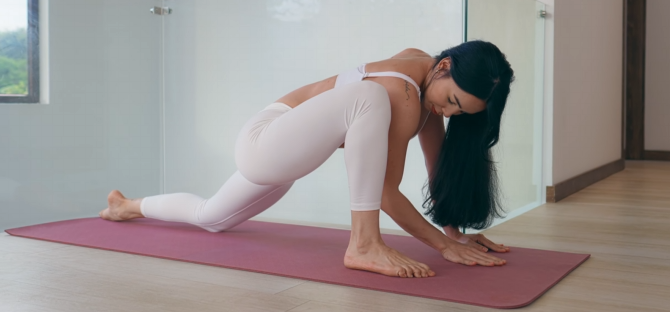
How to Practice the Middle Split Safely
Patience is key when attempting middle splits. Avoid forcing your body down—this can lead to serious injury. Here’s a step-by-step approach to safely work toward this goal:
1. Use Props
Place yoga blocks under your hands or thighs for support. A bolster or cushion under the hips can also reduce pressure.
2. Control the Descent
Lower slowly into the straddle position. Engage your core and thighs to control the stretch. Keep the knees facing up and point the toes forward.
3. Breathe Deeply
Breathing deeply helps your muscles relax and release tension. Inhale to lengthen the spine, and exhale to soften into the stretch.
4. Hold Gently
Stay in a comfortable range where you feel a deep stretch, but no pain. Hold for 30 seconds to 1 minute, gradually increasing over time.
5. Practice Consistently
Doing a little bit every day will yield better results than one intense stretching session. Aim for 10–15 minutes of flexibility work, 3–5 times a week.
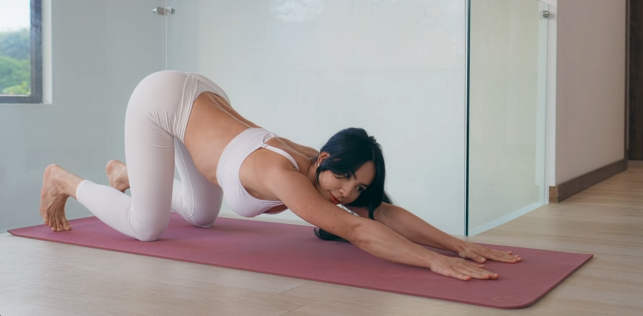
Tips to Enhance Your Progress
Even if you’re not naturally flexible, you can make great progress with time. Here are some tips to help your journey:
- Don’t compare yourself to others. Everyone’s body is different. Focus on your personal growth.
- Incorporate strength training. Strong muscles support better flexibility and prevent injury.
- Stay hydrated. Dehydrated muscles are more likely to cramp and resist stretching.
- Massage and foam roll. This can release tight fascia and improve blood flow to muscles.
- Get enough rest. Muscles need time to recover after deep stretching.
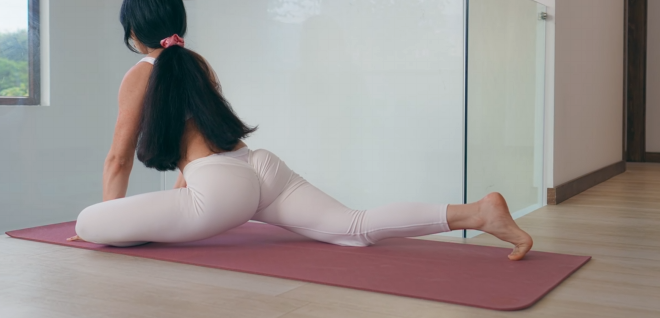
Common Mistakes to Avoid
Middle splits should be approached with care. Here are some common errors to watch for:
- Bouncing or forcing: Bouncing in your splits or pushing too hard can tear muscles and ligaments.
- Poor hip alignment: Letting the hips tilt forward or back creates imbalanced pressure.
- Neglecting warm-up: Skipping warm-up increases the risk of injury and slows progress.
- Holding your breath: Tension in the breath leads to tension in the body.
- Inconsistency: Infrequent practice won’t give the results you want.
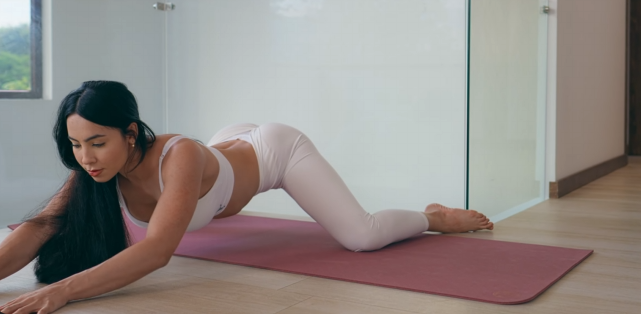
Variations and Modifications
If a full middle split feels out of reach right now, don’t worry. There are several beginner-friendly options:
Seated Wide-Leg Forward Fold (Upavistha Konasana)
Sit with legs spread wide and fold forward. This version helps you develop flexibility while keeping the hips grounded.
Wall Straddle
Lie on your back near a wall with legs extended up the wall. Gently let the legs fall apart and let gravity do the work.
Elevated Middle Split
Place your feet on sliders or yoga blocks and gently slide apart, using hands on the floor for balance. This builds strength and control.

Final Thoughts
Achieving a full middle split in yoga is not about being the most flexible person in the room. It’s a powerful expression of discipline, body control, and inner focus. Whether you’re an athlete, yogi, or someone just starting out, “split down the middle” stretching can become a rewarding and transformative part of your wellness journey.
Remember: be patient, be kind to your body, and enjoy the process. Progress may be slow, but every step you take brings you closer to harmony between flexibility, strength, and self-awareness.


